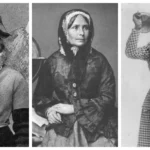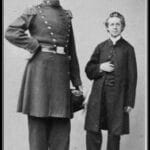The Man Who Shot George Wallace: A Quest for Notoriety?
Arthur Herman Bremer, a name forever etched in the annals of American history, is infamous for his attempted assassination of George Wallace in 1972. Driven by a hunger for notoriety, this act cast a long shadow, even influencing Martin Scorsese’s iconic film “Taxi Driver” and its memorable character, Travis Bickle.
Born in 1950, Bremer’s childhood and adolescence were marked by social isolation and awkwardness, traits that followed him into adulthood. In 1972, he began keeping a diary — a chilling document that revealed his twisted ambition to assassinate a high-profile political figure, either Richard Nixon or George Wallace. Bremer believed this horrific act would secure his place in history.
The Assassination Attempt and Its Aftermath
Consumed by these delusions, Bremer spent ten weeks stalking Wallace, meticulously planning his attack. On May 15, 1972, at a Maryland shopping center, Bremer’s sinister plan came to fruition. He opened fire on Wallace in front of a horrified crowd, forever changing the course of American political history.
While Wallace miraculously survived the attack, he suffered devastating injuries, leaving him paralyzed from the waist down. The assassination attempt sent shockwaves through the nation, exposing the chilling reality of political violence. Bremer’s trial and subsequent conviction resulted in a 63-year prison sentence.
Wallace’s Transformation and the Shadow of “Taxi Driver”
The assassination attempt had a profound impact on Wallace’s life. Though the event tragically cut his political career short, Wallace used this experience and his platform to renounce the segregationist views he once espoused. His transformation serves as a testament to the power of change and redemption.
Meanwhile, Bremer’s diary entries, filled with disturbing thoughts and meticulous plans, took on a life of their own. They served as a blueprint for the character of Travis Bickle in Martin Scorsese’s “Taxi Driver,” released in 1976. The film explores the complexities of urban alienation, loneliness, and the allure of violence – themes deeply intertwined with Bremer’s story.
A Legacy of Unanswered Questions
Experts continue to analyze Bremer’s mental state leading up to the assassination attempt. His obsessive behavior and insatiable desire for attention raise questions about the role of mental illness in such violent acts. This case study also compels us to look inward as a society. How much does our collective obsession with fame contribute to these desperate acts?
Bremer’s case highlighted a terrifying new breed of criminal: the lone-wolf attacker. Often driven by twisted ideologies and lurking in the shadows, this type of criminal is difficult to detect. The assassination attempt underscored the importance of recognizing warning signs, addressing mental health issues, and remaining vigilant against all forms of extremism.
The legacy of Arthur Herman Bremer’s actions extends far beyond the events of May 15, 1972. He serves as a chilling reminder of the potential consequences of unchecked anger, alienation, and the pursuit of infamy. As long as our society grapples with these issues, particularly in the age of social media where instant gratification and fleeting fame are constantly sought, Bremer’s story will remain eerily relevant. He stands as a cautionary tale, a dark reflection of the shadows that lurk within the human psyche and the urgent need to find better ways to address them.
Where is Arthur Herman Bremer Now?
After spending 35 years behind bars for attempting to kill George Wallace, Arthur Herman Bremer faded from the public eye. Released in 2007, Bremer now likely lives a low-key life in Maryland, steering clear of the media. Still, the echoes of his actions continue to resonate.
Bremer’s time in prison wasn’t easy. He was involved in fights and spent time in solitary confinement. While his exact location remains a mystery, it is believed he resides somewhere in Maryland, deliberately avoiding the media and public eye.
Bremer’s “Assassin’s Diary” offers a disturbing glimpse into his mind. It reveals his obsession with violence, his yearning for fame, and the meticulous planning that went into the attack. The publication of excerpts from the diary has sparked debates about the ethics of profiting from such material. While much of what happened after his release remains unknown, the chilling details of Bremer’s life and crime continue to fascinate and trouble.
Arthur Herman Bremer Today: A Life shrouded in Secrecy
After more than three decades in prison for the attempted assassination of George Wallace, Arthur Herman Bremer was released on parole in 2007. He currently resides in Cumberland, Maryland. While his exact whereabouts are kept under wraps, likely for his safety and to allow him a life away from the public eye, it’s known that he lives a quiet life there.
Bremer’s release was not unconditional. He lives under strict parole guidelines, which include regular check-ins for mental health evaluations and electronic monitoring to track his whereabouts. To prevent any potential risks, he’s also forbidden from contacting any politicians or political hopefuls. These restrictions are in place until 2025 when his parole period comes to an end.
Important Points:
- Arthur Herman Bremer attempted to assassinate George Wallace in 1972, driven by a thirst for notoriety.
- Bremer’s childhood and adolescence were marked by social isolation and awkwardness.
- He meticulously planned the assassination attempt, as revealed in his chilling diary entries.
- Wallace survived the attack but was left paralyzed from the waist down.
- Bremer’s conviction resulted in a 63-year prison sentence.
- Wallace used his platform after the attack to renounce segregationist views, demonstrating the power of change.
- Bremer’s diary influenced the character of Travis Bickle in Martin Scorsese’s “Taxi Driver.”
- Bremer’s case highlights the role of mental illness and our collective obsession with fame in acts of violence.
- His actions introduced the new threat of lone-wolf attackers, driven by twisted ideologies.
- Bremer’s story serves as a cautionary tale about unchecked anger, alienation, and the darkness that lurks within the human psyche.
People’s Statements:
- Retain any direct quotes from Arthur Bremer, George Wallace, or other relevant individuals exactly as they appear in your source material.
For further reading on architects and their work, you can explore the fascinating life of Antoni Gaudí i Cornet or delve into the story of Collis Potter Huntington, a railroad tycoon who commissioned Gaudi for a notable project.
- Unlock Water’s Symbolism: A Cross-Cultural Exploration - April 20, 2025
- Identify Black and White Snakes: Venomous or Harmless? - April 20, 2025
- Unlocking Potential: Origins High School’s NYC Story - April 20, 2025















